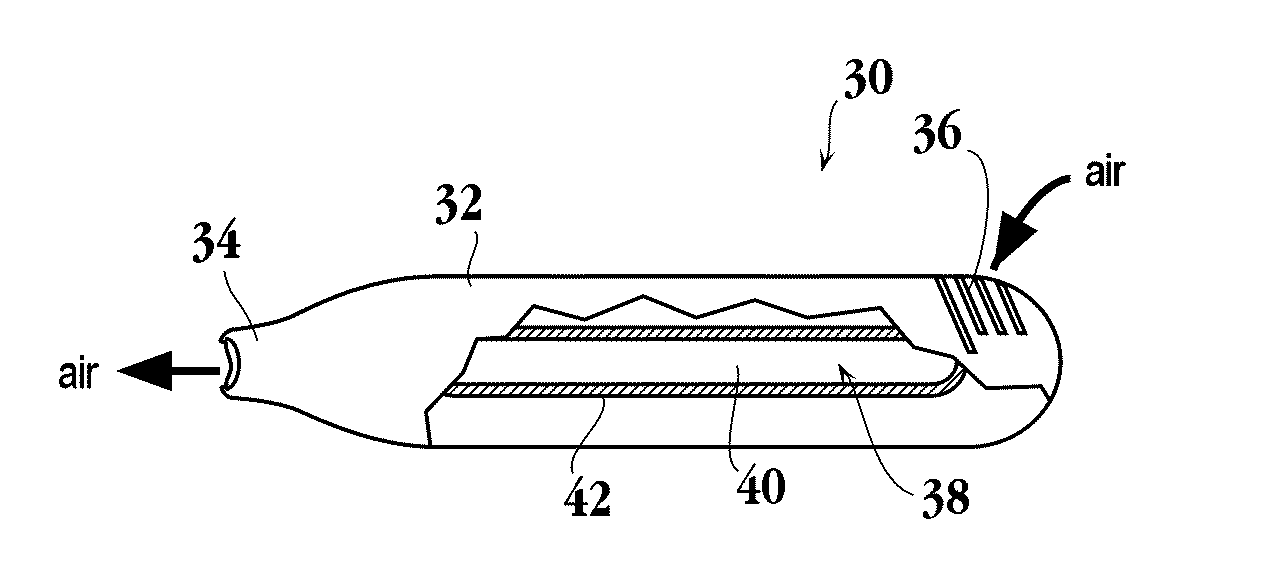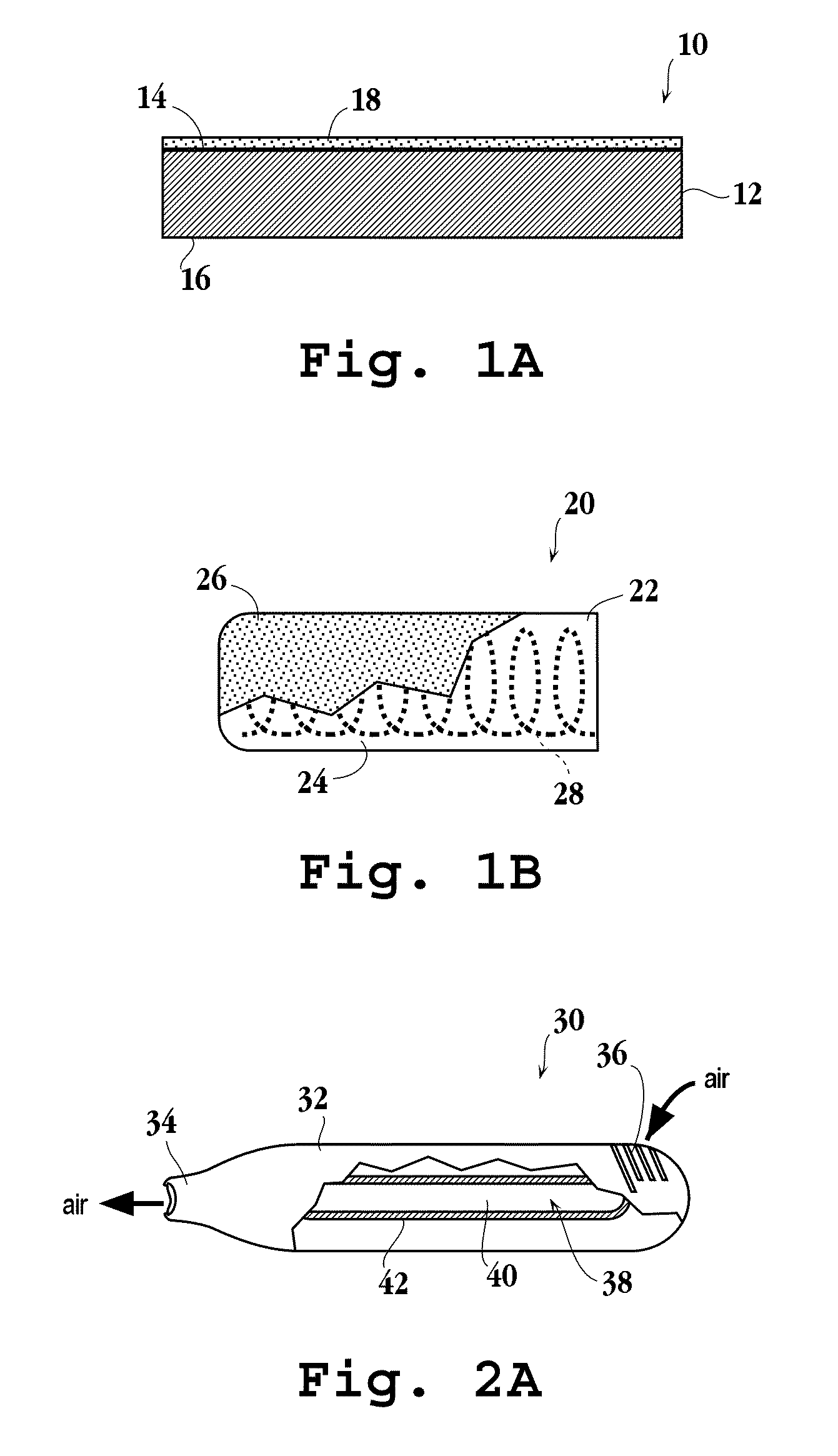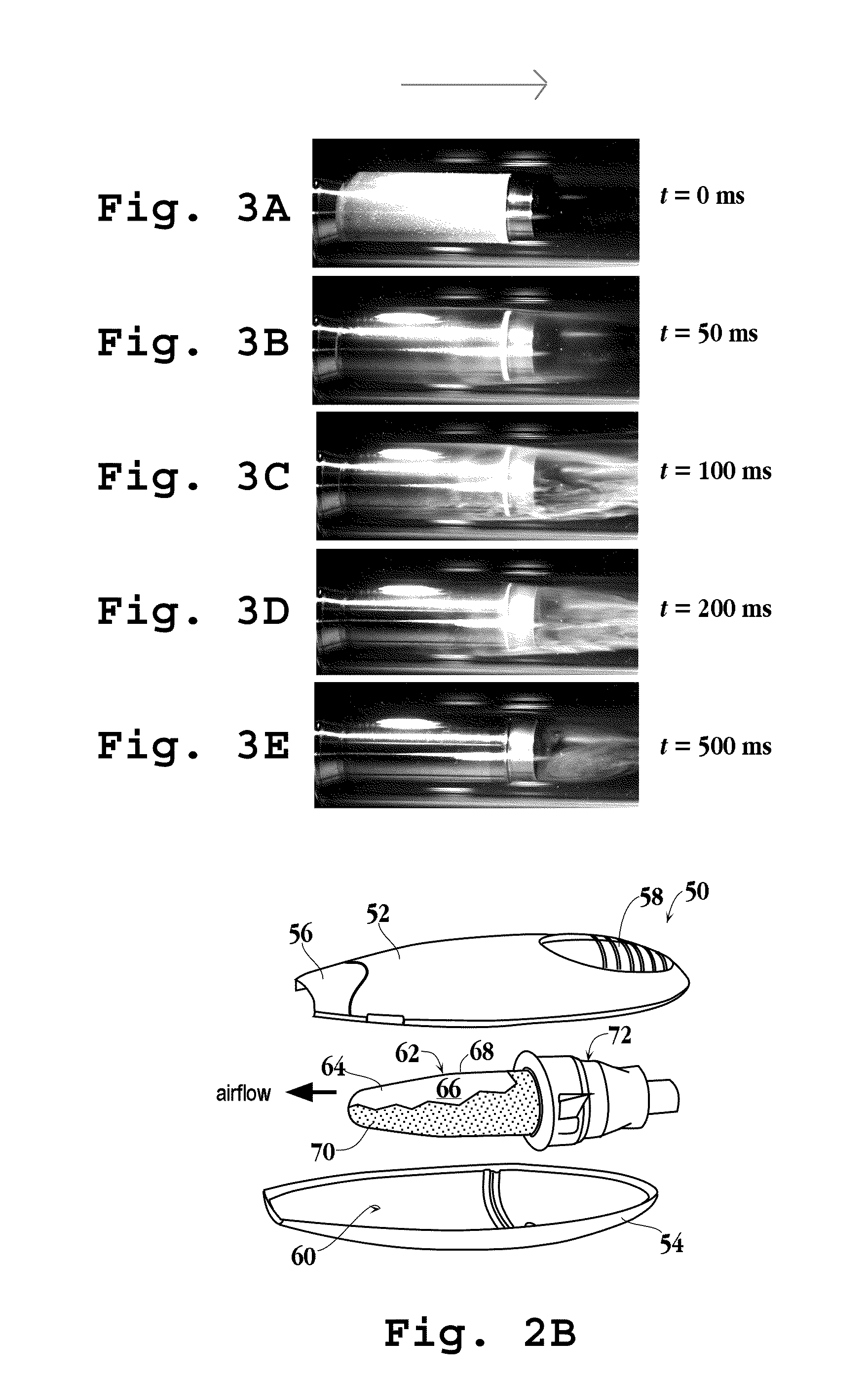Aerosol delivery system and uses thereof
- Summary
- Abstract
- Description
- Claims
- Application Information
AI Technical Summary
Benefits of technology
Problems solved by technology
Method used
Image
Examples
example 1
[0623]Acebutolol (MW 336, melting point 123° C., oral dose 400 mg), a beta adrenergic blocker (cardiovascular agent), was coated on a stainless steel cylinder (8 cm2) according to Method D. 0.89 mg of drug was applied to the substrate, for a calculated drug film thickness of 1.1 μm. The substrate was heated as described in Method D at 20.5 V and purity of the drug-aerosol particles were determined to be 98.9%. 0.53 mg was recovered from the filter after vaporization, for a percent yield of 59.6%. A total mass of 0.81 mg was recovered from the test apparatus and substrate, for a total recovery of 91%.
[0624]High speed photographs were taken as the drug-coated substrate was heated to monitor visually formation of a thermal vapor. The photographs showed that a thermal vapor was initially visible 30 milliseconds after heating was initiated, with the majority of the thermal vapor formed by 130 milliseconds. Generation of the thermal vapor was complete by 500 milliseconds.
example 2
[0625]Acetaminophen (MW 151, melting point 171° C., oral dose 650 mg), an analgesic agent, was coated on an aluminum foil substrate (20 cm2) according to Method C. 2.90 mg of drug was applied to the substrate, for a calculated thickness of the drug film of 1.5 μm. The substrate was heated under argon as described in Method C at 60 V for 6 seconds. The purity of the drug-aerosol particles were determined to be >99.5%. 1.9 mg was recovered from the glass tube walls after vaporization, for a percent yield of 65.5%.
example 3
[0626]Albuterol (MW 239, melting point 158° C., oral dose 0.18 mg), a bronchodilator, was coated onto six stainless steel foil substrates (5 cm2) according to Method B. The calculated thickness of the drug film on each substrate ranged from about 1.5 μm to about 6.1 μm. The substrates were heated as described in Method B by charging the capacitors to 15 V. Purity of the drug-aerosol particles from each substrate was determined and the results are shown in FIG. 23.
[0627]Albuterol was also coated on a stainless steel cylinder (8 cm2) according to Method D. 1.20 mg of drug was applied to the substrate, for a calculated drug film thickness of 2.4 μm. The substrate was heated as described in Method D by charging the capacitors to 20.5 V. The purity of the drug-aerosol particles was determined to be 94.4%. 0.69 mg was recovered from the filter after vaporization, for a percent yield of 57.2%. A total mass of 0.9 mg was recovered from the test apparatus and substrate, for a total recovery ...
PUM
 Login to View More
Login to View More Abstract
Description
Claims
Application Information
 Login to View More
Login to View More - R&D
- Intellectual Property
- Life Sciences
- Materials
- Tech Scout
- Unparalleled Data Quality
- Higher Quality Content
- 60% Fewer Hallucinations
Browse by: Latest US Patents, China's latest patents, Technical Efficacy Thesaurus, Application Domain, Technology Topic, Popular Technical Reports.
© 2025 PatSnap. All rights reserved.Legal|Privacy policy|Modern Slavery Act Transparency Statement|Sitemap|About US| Contact US: help@patsnap.com



